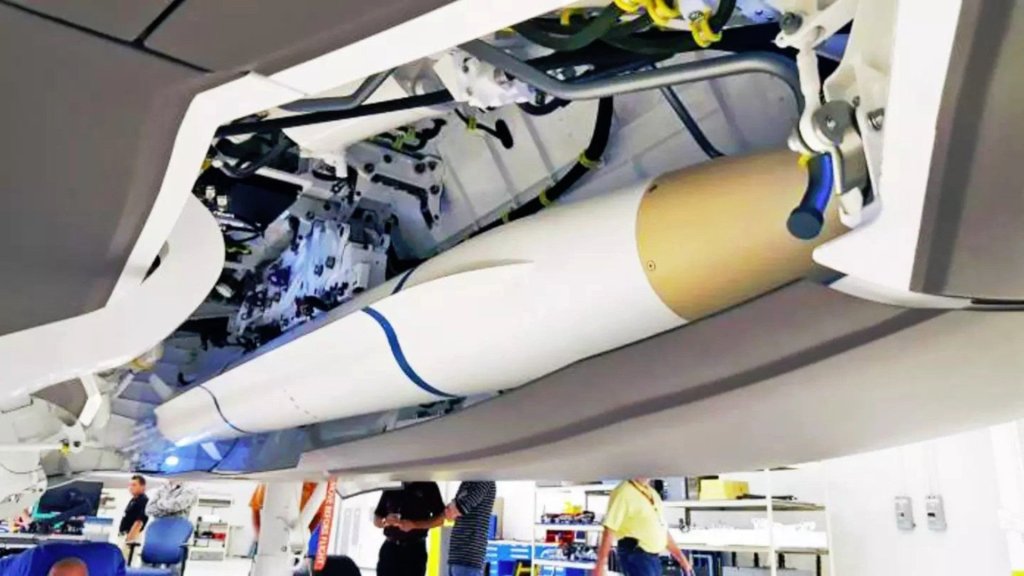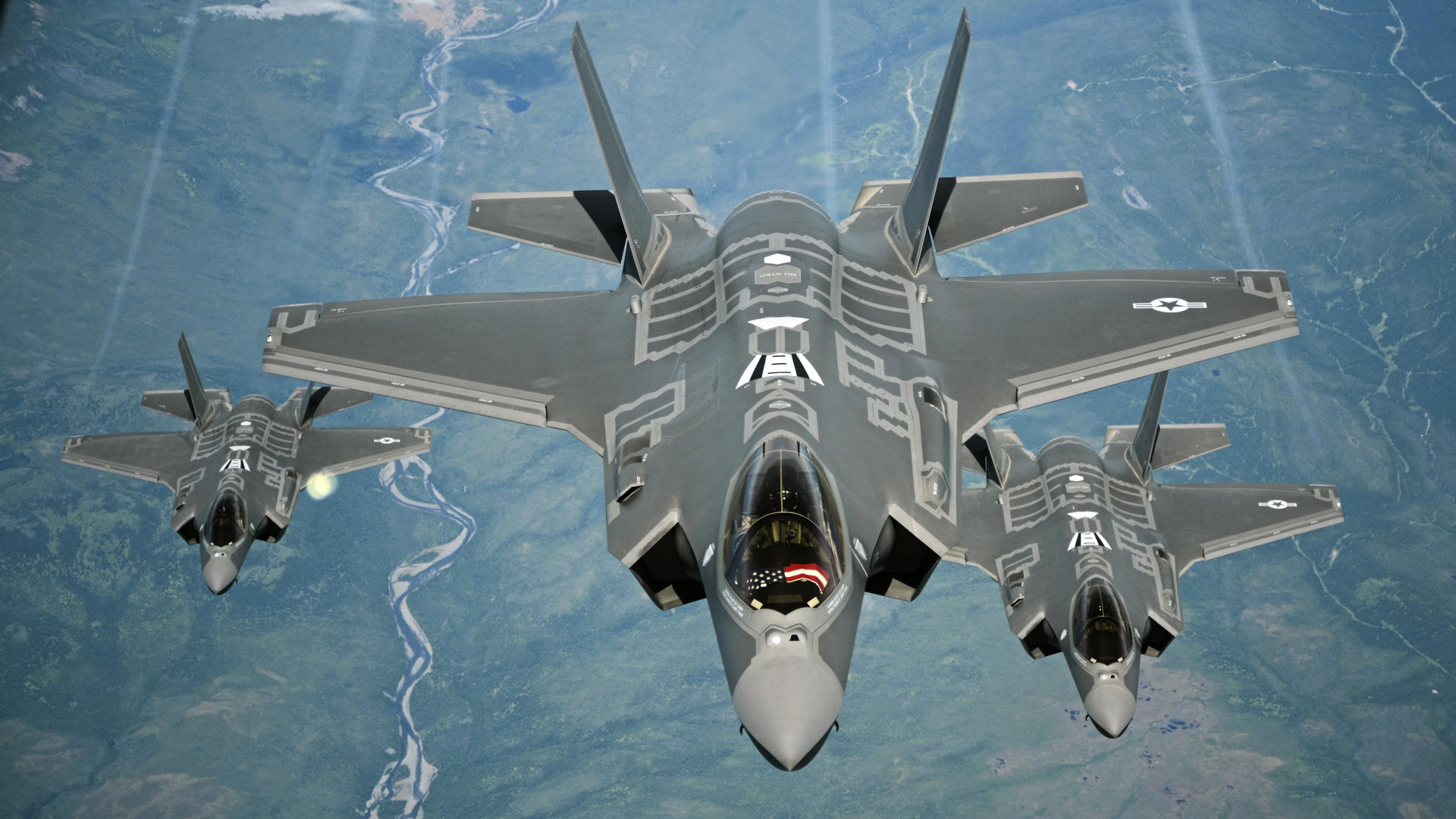The U.S. Air Force is set to forward-deploy F-35A Joint Strike Fighters in Japan for the first time, the Pentagon has announced. The stealthy F-35As will supplant F-16 Viper fighters the service currently has based in that country that are optimized for the Wild Weasel air defense-hunting mission. The Marine Corps will also make changes to its forward-deployed F-35B force already in the country.
In addition, the Pentagon has further confirmed that the Air Force will station F-15EX Eagle II fighters at Kadena Air Base on the Japanese island of Okinawa. The War Zone was the first to get a hard confirmation of this long-expected plan and inside details in an exclusive interview with the commander of the Oregon Air National Guard’s 142nd Wing. The 142nd is the first operational unit to get the Eagle II and will be aiding in the process of getting the new fighters to Japan.

The Department of Defense (DoD) announced the aviation force posture changes in Japan, decisions it said were made in close coordination with that country’s government, earlier today. The Pentagon says this is part of a broader effort to modernize its presence in the country, which will occur “over the next several years” and “reflects over $10 billion of capability investments.” All of this comes amid U.S. military-wide preparations for a potential high-end conflict in the Pacific region against China.
“The U.S. Air Force will also upgrade its presence at Misawa Air Base from 36 F-16 aircraft to 48 F-35A aircraft, leading to greater tactical aircraft capacity and capability,” according to the Pentagon press release today. “At Marine Corps Air Station (MCAS) Iwakuni, the U.S. Marine Corps will modify the number of F-35B aircraft to support the Service’s force design modernization implementation. The U.S. Marine Corps will continue to maintain an enduring and rotational aircraft presence at MCAS Iwakuni to ensure the necessary capabilities to support the defense of Japan.”
“The U.S. Air Force will upgrade its presence at Kadena Air Base by deploying 36 F-15EX aircraft to replace 48 F-15C/D aircraft as part of a planned divestment and modernization,” the release adds. “The Joint Force will continue to maintain a rotational presence of 4th and 5th generation tactical aircraft at Kadena Air Base throughout this transition.”

The announcement that the Air Force’s F-16 Vipers at Misawa Air Base will be replaced by F-35As is a major development. The 35th Fighter Wing at Misawa flies F-16CM versions of the Viper that are optimized for the Wild Weasel suppression/destruction of enemy air defenses (SEAD/DEAD) mission set. SEAD/DEAD will be critical in any future major conflict.

Though not explicitly said in today’s release from the Pentagon, the expectation here then is that these F-35As will assume that mission. The Joint Strike Fighter is a SEAD/DEAD master in its own right, thanks heavily to its radar-evading design and extensive built-in electronic warfare and electronic support measures (EW/ESM) suites. The jet’s EW/ESM capabilities are only set to grow with the future Block 4 upgrade package.
Air Force F-35As are also set to get the new AGM-88G Advanced Anti-Radiation Guided Missile-Extend Range (AARGM-ER), as well as a more general air-to-ground strike derivative of that missile called the Stand-In Attack Weapon (SiAW), among other additions to their arsenal. The AGM-88G and SiAW will fit in the F-35A’s internal bays, allowing it to carry them while staying in its most stealthy configuration.


There is also already a robust support structure in Japan for the F-35A, which the Japan Air Self-Defense Force (JASDF) also operates. The JASDF is set to get F-35Bs, as well. The Japanese do not operate any F-16 variants, though do fly a derivative design, the F-2.
As already noted, The War Zone previously confirmed the plan to send F-15EXs to Kadena. This had been looking steadily more and more likely to be the case after the Air Force announced plans to shutter two F-15C/D Eagle squadrons at the base in 2022. In the interim, the service has been using rotational deployments of other fighters, including stealthy F-22 Raptors and F-35A Joint Strike Fighters, to bolster its presence there, as the Pentagon’s release today highlights.

While the F-15EXs will not offer a one-for-one replacement for the F-15C/Ds that had been at Kadena, the new Eagle IIs are significantly more capable. With its powerful AN/APG-82 active electronically scanned array radar, Eagle Passive/Active Warning Survivability System (EPAWSS) electronic warfare suite, two glass cockpits with large area digital displays, and pair of 29,400-pound thrust class General Electric F110-GE-129 engines, the F-15EX is the most advanced F-15 variant to ever enter production. The jets also have a state-of-the-art fly-by-wire system that, among other things, allows for the carriage of weapons on two additional underwing stations. You can read more about the Eagle II, which has an expected 20,000 flight hour service life, here.
The F-15EX squadrons at Kadena are also set to be the first operational active-duty units to fly the type, and may be the only ones if no changes are made to the Air Force’s current plans for the Eagle II. The bulk of the service’s expected fleet of F-15EXs – currently set to total 98 jets, but which may grow in the future as a result of Congressional intervention – will be assigned to Air National Guard units in the Continental United States. This includes the Oregon Air National Guard’s 142nd Wing, as well as the California Air National Guard’s 144th Fighter Wing and the Louisiana Air National Guard’s 159th Fighter Wing.
“We’re also going to be instrumental in the acquisition and movement of jets 15 through 51 [the 36 F-15EXs] to Kadena,” Air Force Col. Michael Kosderka, head of the 142nd told The War Zone last month. “Starting here in about December, there’s going to be active duty personnel from Kadena Air Base that will be here… And they’re going to be learning how to maintain the airplane, how to fly it, and all the things that they need to do.”
“And then, as Boeing is able to deliver jets starting in about July of 2025, those jets will be Kadena jets,” Kosderka continued. “So they’ll come here, they’ll stage here with all their support equipment with their personnel. And then when they get enough of them here at a time — I would imagine about six jets at a time or so — then they’ll do a movement to move them over to the island [Okinawa, home of Kadena].”
Kosderka shared other details about the plans for the F-15EX fleet in his full interview with us, which you can find here.

As it stands now, the Air National Guard expects to use its F-15EXs primarily in the air-to-air role in support of the homeland defense mission. However, the added capabilities that the jets offer have already prompted new interest in air-to-ground mission sets. The War Zone also regularly highlights how the two-seat Eagle II is well positioned to serve as an airborne controller for future drones like the Air Force’s forthcoming Collaborative Combat Aircraft (CCA). In the Pacific, the F-15EXs ability to ‘quarterback’ for uncrewed aircraft and carry out long-range strikes, potentially with new hypersonic weapons, could be especially valuable in a future major fight, such as one with China.
Since The War Zone first broke the inside story of F-15EX we have also underscored how the Eagle II’s capabilities, especially its range and payload capacity (to include the ability to carry outsized weapons and other stores), make it a good complement to stealthy F-22s and F-35s as part of a high-low mix. There also continue to be concerns that the Air Force’s planned fleet of just 98 Eagle IIs will be too small to make the most of all that these aircraft have to offer.
Details are more limited about the changes coming to the Marine’s F-35B posture at Iwakuni, but that service has already spent the past few years completely overhauling its entire force structure. The changes are in support of still-evolving distributed and expeditionary concepts of operations that a heavily centered on island-hopping scenarios in the context of a larger fight in the Pacific. The F-35B, with its short takeoff and vertical landing capabilities, is a key component of those plans, which expect to see relatively small Marine contingents rapidly deploy and redeploy from one forward – and likely remote – location to another.

All of this comes amid a larger U.S. military-wide pivot toward planning around a potential high-end conflict in the Pacific against China. American officials have been warning for years now about the potential for a major fight over Taiwan to come well before the end of the decade. There are other serious possible flashpoints elsewhere in the Pacific, including the hotly contested South China Sea. Outright confrontations have been ramping up recently between China and the Philippines, the latter of which has a mutual defense treaty with the United States.
Altogether, the U.S. military’s aviation posture in Japan is now formally set to see major changes in the coming years, including the first forward-based Air Force F-35As and F-15EX Eagle IIs in the country.
Contact the author: joe@twz.com
